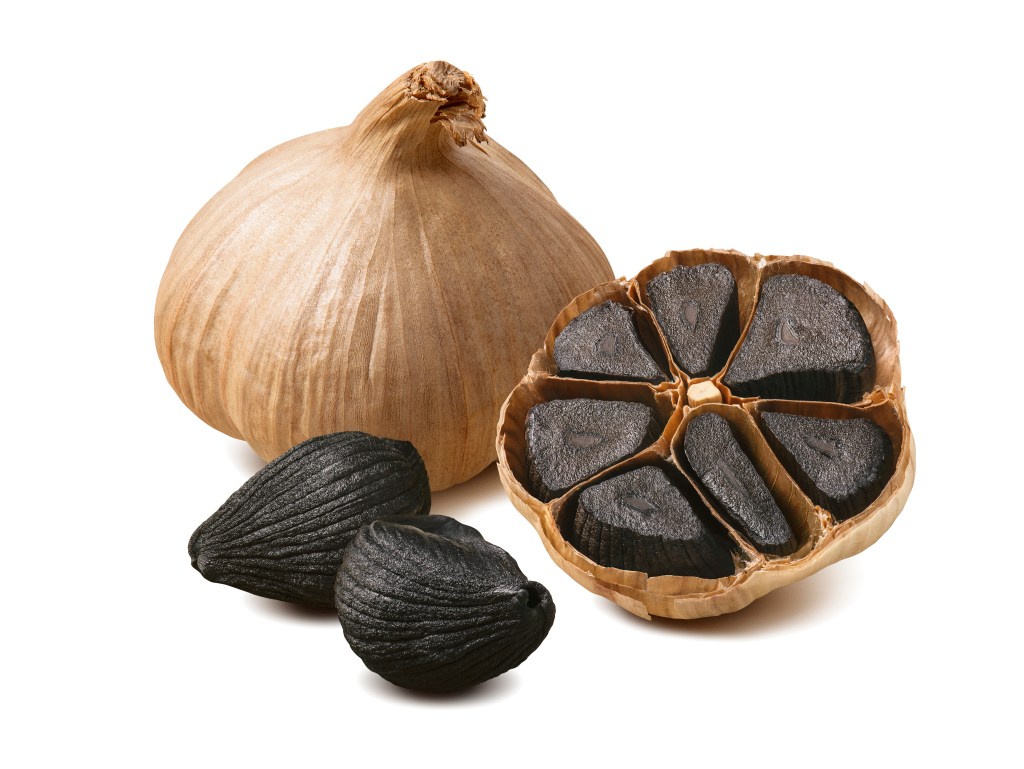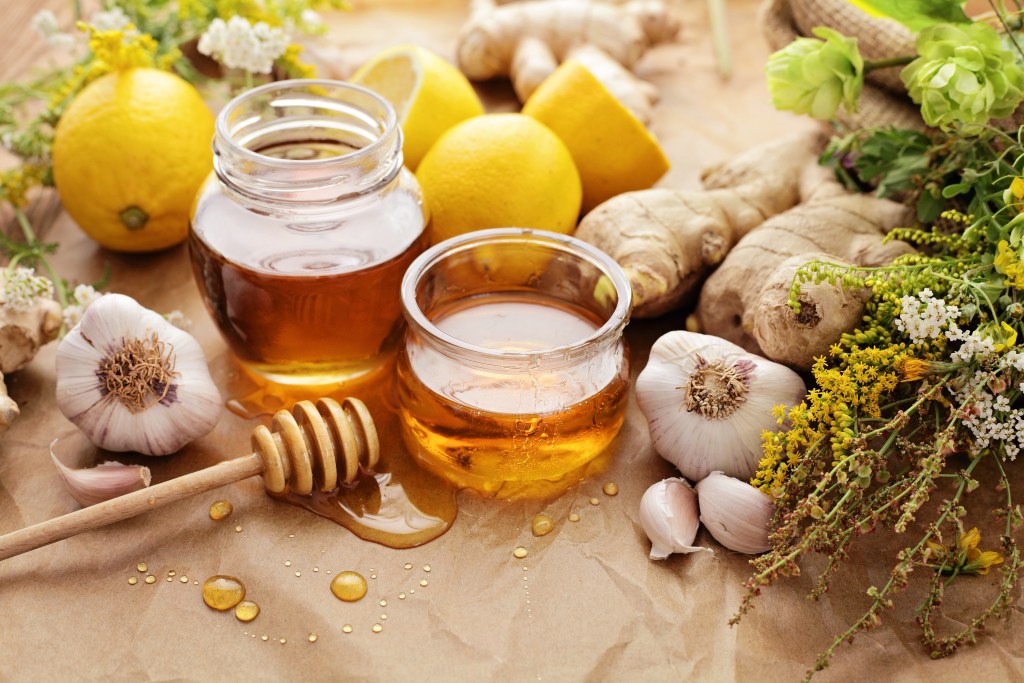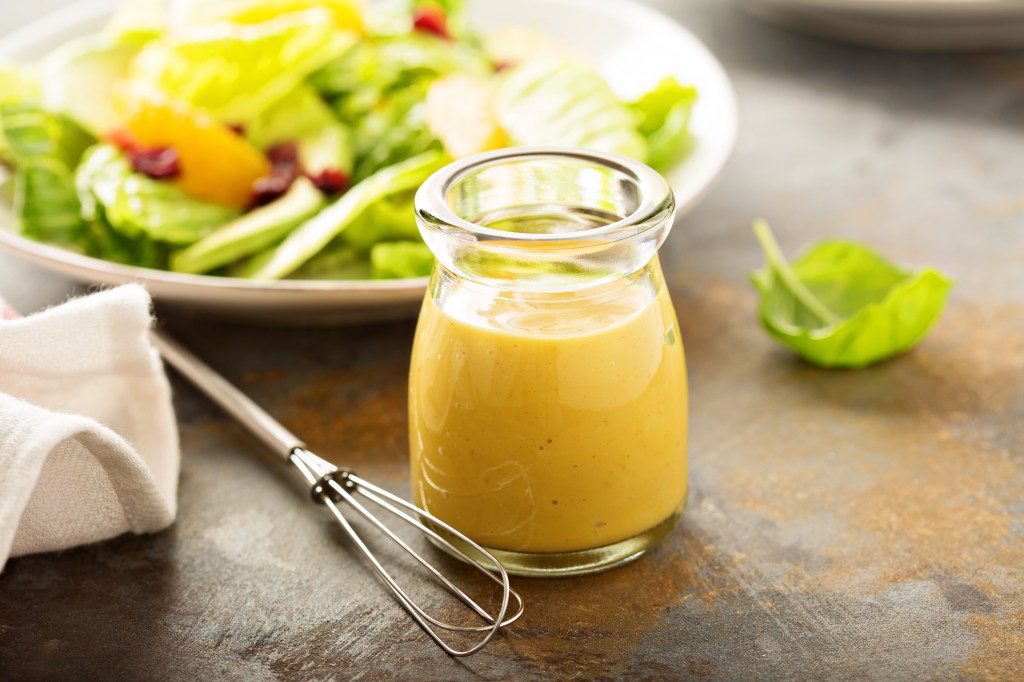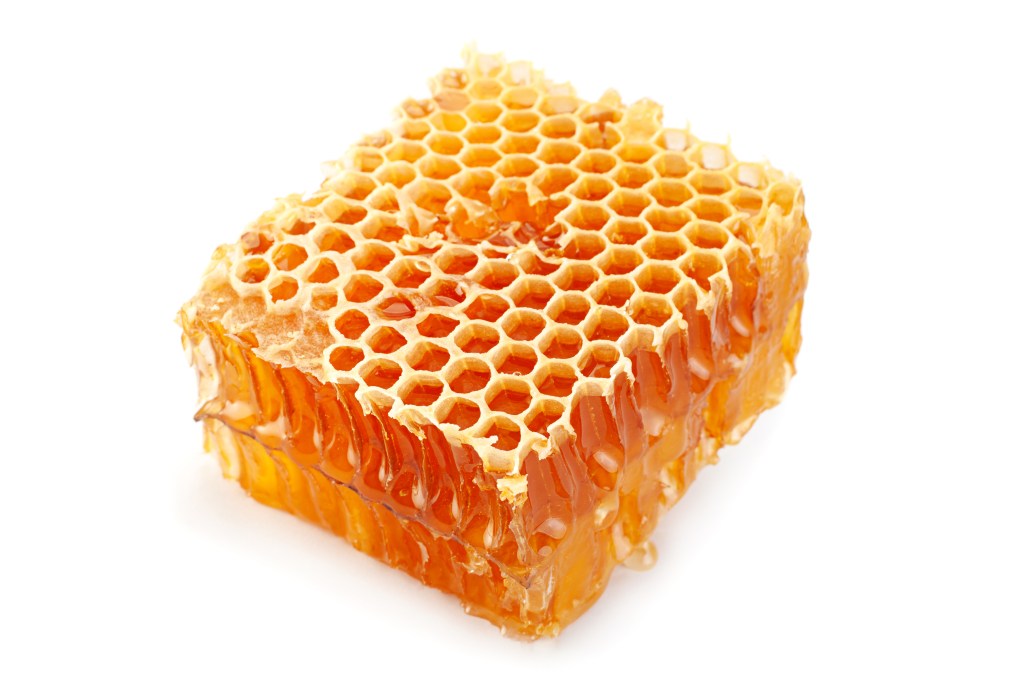At a glance
Honey and garlic benefits extend beyond flavor, they offer natural support for immune health. Together, they provide antioxidant, antibacterial, and antiviral properties that help the body defend against harmful microbes. When used fresh, fermented, or combined in recipes, honey and garlic can promote detoxification, support seasonal comfort, and help maintain a balanced immune response.
For millennia, honey and garlic have been valued in traditional wellness practices for their natural protective properties. Both are rich in compounds that support the body’s natural defenses and overall immune function.
Discover five honey and garlic benefits for supporting immune function and learn how to incorporate these two superfoods into your daily routine.
5 honey and garlic benefits for your immune system
The health benefits of fresh garlic are mainly attributed to allicin, a sulfur compound proven to have various health advantages, including potent antimicrobial effects.
Honey has similar benefits while offering a wide range of vitamins, minerals, and pollen, making it a helpful natural remedy for seasonal allergies.
Here are five impressive ways honey and garlic can benefit your immune system.
1. May lower the risk of cancer
Allicin, the active compound in fresh garlic, has been studied for its potential to influence cell growth, migration, and immune responses associated with cancer development.
Research published in Frontiers of Pharmacology found that allicin may reduce the spread and replication of certain cancer cells in laboratory studies.1
Honey also contains antioxidants and anti-inflammatory compounds that may help support immune surveillance, which is critical for detecting cells that display abnormal characteristics.
2. Potent antibacterial properties
Garlic and honey both exhibit natural antibacterial properties that may help the body defend against harmful microbes.
A study published in the Life Science Journal found that garlic juice and honey inhibited eight bacterial strains, including Streptococcus pyogenes and Staphylococcus aureus, the microbes responsible for strep throat and staph infections.2
Interestingly, the antimicrobial properties were most effective when honey and garlic were combined.
3. Protect against viral infections
The organosulfur compounds found in garlic may help prevent viruses from entering cells, which supports the immune system against viral infections.
In addition, honey also has anti-viral properties. A study published in the Archives of Medical Research showed that bioactive components in manuka honey efficiently inhibited influenza virus replication.3
4. Promote detoxification processes
Garlic may support the body’s ability to detoxify and eliminate environmental toxins.
A study published in Phytotherapy Research found that certain compounds in garlic can help manage the toxic effects of various chemicals on the reproductive system and vital organs.4
“Garlic has the ability to bind with organophosphates, a class of pesticides, which helps detox these chemicals from your body,” explains Dr. Berg. “Organophosphates have a devastating effect on your immune system and increase the risk of infection and disease.”
5. Help ease seasonal allergy symptoms
Raw honey contains traces of pollen, and consuming local honey varieties may help improve seasonal allergies by strengthening the immune system’s tolerance to pollen in your area.
A study published in the Annals of Saudi Medicine explains, “Exposure to a constant low dose of allergens in honey may make the body accustomed to its presence and decrease the chance of an overwhelming immune system response.”5
Watch the video below to learn more about the health benefits of garlic.
Raw honey vs. pasteurized honey
Pasteurized honey is exposed to heat to slow granulation, giving honey a smoother and more liquid texture. Additionally, pasteurization kills yeast in the honey, which prevents fermentation.
However, heat also destroys various nutrients, including vitamins, antioxidants, and enzymes, which are attributed to honey’s many health benefits.
In contrast, raw honey is harvested directly from the beehive, retaining pollen, antioxidants, and other health-promoting nutrients, including:
- Vitamins B3
- Vitamin B5
- Vitamin B12
- Vitamin C
- Calcium
- Copper
- Zinc
- Magnesium
- Manganese
- Phosphorus
- Potassium
Raw honey also contains hydrogen peroxide, which contributes to its antimicrobial properties. This explains why honey is often used topically to help support the healing of minor cuts, scrapes, and abrasions.

Fresh vs. fermented garlic
Raw garlic contains allicin, which is credited with garlic’s potent antioxidant, antiviral, and anti-inflammatory properties.
In addition, raw garlic is a rich source of various nutrients, such as:
Though fresh garlic has many health benefits, fermenting garlic can increase the bioavailability of nutrients and boost its antioxidant content, which may help manage various health conditions.
Garlic is typically fermented in raw honey or by slightly heating and aging it, creating a product known as black garlic.
A study published in Nutrition Research and Practice found that black garlic contains significantly higher concentrations of antioxidants than regular white garlic.6
It’s important to note that most garlic available in supermarkets is bleached with chlorine, which decreases its nutritional value.
To maximize garlic’s health benefits, opt for organic, locally grown garlic to avoid chemicals linked to hormonal imbalance, cancer, heart problems, and respiratory issues.

Ways to use honey and garlic
Garlic and honey are excellent natural remedies to alleviate cold and flu symptoms and boost immune defenses.
Here are four ways you can incorporate honey and garlic into your routine.
1. Garlic honey drink
This garlic honey mixture packs the disease-fighting properties of garlic and honey to support natural immunity.
For this mixture, you’ll need:
- 3 garlic cloves
- 1 whole organic lemon, including peel
- 1 tablespoon apple cider vinegar
- 1 tablespoon raw local or manuka honey
- 16 ounces water
Blend ingredients in a food processor and use at the first sign of illness, or take a shot (1.5 ounces) of this garlic honey drink once daily during cold and flu season.
2. Honey-fermented garlic
Honey-fermented garlic has been used for generations for its nutritional and medicinal properties.
To ferment garlic with honey, place peeled garlic cloves in a glass jar with an air-tight lid. Pour raw, organic honey over the garlic cloves until they’re covered. Seal jar and store at room temperature for three days.
After a few days, open the jar and check for signs of fermentation. If gas is released and tiny bubbles are forming, the garlic is starting to ferment.
Stir honey and garlic, and reseal jar for a few weeks to continue the fermentation process.
To use honey-fermented garlic, consume one fermented garlic clove daily. This natural remedy can be especially beneficial during the winter months and may help prevent bacterial and viral infections.
Storing fermented garlic honey is easy, as it doesn’t need to be refrigerated and can be left at room temperature for up to one year.

3. Homemade salad dressing
Homemade salad dressing is one of the easiest ways to incorporate garlic and honey into your diet.
Combine fresh garlic cloves, olive oil, balsamic vinegar, and organic honey to create a delicious and health-promoting dressing.
You can also create a vinaigrette using apple cider vinegar, olive oil, honey, and crushed garlic. Apple cider vinegar can enhance the health benefits of garlic and honey due to its potent anti-inflammatory and antimicrobial properties.
4. Add to meals
Garlic is versatile and can be added to a variety of dishes to boost flavor and immune defense.
Cooking garlic doesn’t affect its medicinal properties. The health-promoting compounds found in garlic are heat-resistant up to 212 degrees F (100 degrees C) for as long as 20 minutes.
Add crushed garlic cloves to soup, roasted vegetables, salsa, or cauliflower mashed potatoes. You can also use garlic powder to season steak, fish, or chicken.

How much garlic and honey should you have?
It’s safe to consume both garlic and honey daily. However, avoid eating too much raw honey, as it’s high in sugar and may increase blood sugar levels, which can lead to metabolic imbalances and weight gain.
You can use garlic liberally in dressings, marinades, and as a seasoning for various recipes. However, remember that too much garlic can lead to stomach upset and bad breath.
Consuming one to two garlic cloves daily is associated with improved immune function while minimizing the risk of gastrointestinal side effects.

Possible downsides of honey and garlic
Despite their many health benefits, garlic and honey may lead to adverse reactions in those with certain health concerns.
Individuals with the following health issues should be cautious when using garlic or honey.
1. Blood sugar imbalances
Honey is high in sugar, which can lead to elevated blood sugar levels and worsen health issues such as diabetes, insulin resistance, or metabolic syndrome.
It’s recommended that individuals with poor blood sugar control consult a healthcare provider before adding honey to their daily routine to minimize the risk of adverse health effects.
2. Blood thinning disorders
Consuming large amounts of garlic can have a blood-thinning effect, increasing the risk of bruising and excessive bleeding.
In addition, it isn’t recommended to consume garlic in combination with certain medications, including:
- Blood thinners
- Antidiabetic drugs
- Antihypertensive drugs
- Protease inhibitors
Discuss the use of garlic with your doctor if you have underlying health issues or are taking prescription medications.
3. Allergic reactions
Although honey can help improve seasonal allergies, it’s important to be aware of the increased risk of allergic reactions.
Those with allergies to pollen may be at an increased risk of experiencing allergic symptoms, including hives, wheezing, difficulty breathing, and rashes when consuming honey.
In addition, young children shouldn’t be given honey, as it can contain bacterial spores that may lead to botulism. This serious and potentially life-threatening condition can lead to muscle weakness, difficulty breathing, paralysis, and, in severe cases, even death.
Key takeaways
- Honey and garlic contain natural compounds such as allicin and antioxidants that support immune health and help the body defend against bacteria, viruses, and other harmful microbes.
- Together, they may promote detoxification, protect against cellular damage, and help the body adapt to environmental toxins and seasonal allergens.
- Raw honey and fermented garlic retain the most nutrients and can be easily added to meals, dressings, or homemade remedies for daily immune support.
- While generally safe, excessive intake may increase blood sugar levels, thin the blood, or trigger allergic reactions in sensitive individuals.
FAQ
1. What are the top honey and garlic benefits for immunity?
Honey and garlic contain antibacterial and antiviral compounds that support the body’s defenses against harmful microbes. These properties may help the immune system respond more effectively to challenges such as seasonal illnesses.
2. What happens if you have garlic and honey before bed?
Consuming garlic and honey before bed may promote restful sleep. Both honey and garlic cloves contain nutrients, including magnesium and zinc, that can improve sleep quality.
Honey also contains L-tryptophan, an amino acid shown to increase sleepiness and reduce the time it takes to fall asleep.
3. When should I eat garlic in the morning or at night?
You can have garlic at any time of the day. However, the best time to eat garlic may be in the morning, as garlic can increase stomach acidity, promoting optimal digestion and nutrient absorption.
4. What is the best type of honey for your immune system?
Manuka honey is considered the best choice for promoting immune system functions as it contains unique compounds not found in other types of honey, such as methylglyoxal.
Methylglyoxal has potent antimicrobial and anti-inflammatory properties, making manuka honey one of the best choices to support strong immune defenses.
Sources
- https://pmc.ncbi.nlm.nih.gov/articles/PMC10067574/ ?
- https://www.lifesciencesite.com/lsj/life1004/325_21789life1004_2429_2435.pdf ?
- https://www.sciencedirect.com/science/article/abs/pii/S0188440914001106 ?
- https://onlinelibrary.wiley.com/doi/10.1002/ptr.6645 ?
- https://www.ncbi.nlm.nih.gov/pmc/articles/PMC6074882/ ?
- https://pubmed.ncbi.nlm.nih.gov/20016716/ ?








